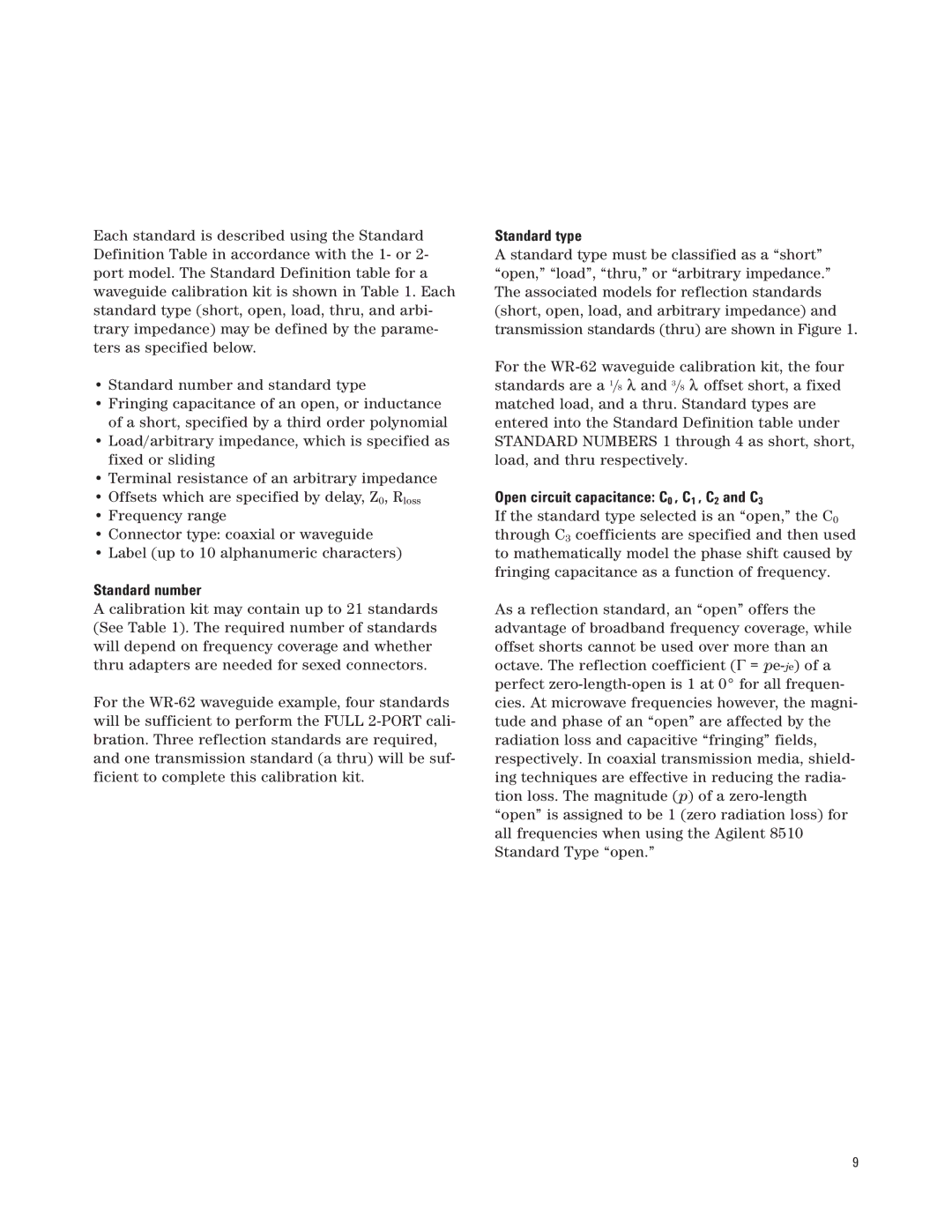Each standard is described using the Standard Definition Table in accordance with the 1- or 2- port model. The Standard Definition table for a waveguide calibration kit is shown in Table 1. Each standard type (short, open, load, thru, and arbi- trary impedance) may be defined by the parame- ters as specified below.
•Standard number and standard type
•Fringing capacitance of an open, or inductance of a short, specified by a third order polynomial
•Load/arbitrary impedance, which is specified as fixed or sliding
•Terminal resistance of an arbitrary impedance
•Offsets which are specified by delay, Z0, Rloss
•Frequency range
•Connector type: coaxial or waveguide
•Label (up to 10 alphanumeric characters)
Standard number
A calibration kit may contain up to 21 standards (See Table 1). The required number of standards will depend on frequency coverage and whether thru adapters are needed for sexed connectors.
For the
Standard type
A standard type must be classified as a “short” “open,” “load”, “thru,” or “arbitrary impedance.” The associated models for reflection standards (short, open, load, and arbitrary impedance) and transmission standards (thru) are shown in Figure 1.
For the
Open circuit capacitance: C0 , C1 , C2 and C3
If the standard type selected is an “open,” the C0 through C3 coefficients are specified and then used to mathematically model the phase shift caused by fringing capacitance as a function of frequency.
As a reflection standard, an “open” offers the advantage of broadband frequency coverage, while offset shorts cannot be used over more than an octave. The reflection coefficient (Γ =
9
